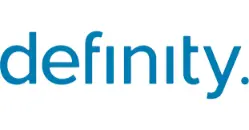You can see more with Jen’s talk on Youtube.
Q: Love to hear insights on how to create sense of belonging where valued staff are required to work remotely (100’s of kms away) due to changes in personal circumstances
A: As said in the session gratitude and appreciation generates oxytocin, the bonding hormone. So we can’t underestimate the power of appreciation with remote employees. eating a sense of belonging for valued employees who are required to work remotely, especially from significant distances, is crucial in retaining engagement, fostering team cohesion, and maintaining morale. When employees are physically separated, it’s easy for them to feel isolated or disconnected from the company culture. To counteract this, organizations must be proactive in building an inclusive and supportive environment. Here are some insights on how to create that sense of belonging:
Strengthen Communication Channels
- Regular Check-ins: Establish a consistent cadence of virtual one-on-one meetings between the remote employee and their manager. This ensures that the employee remains connected to the broader team and that their concerns or feedback are heard.
- Virtual Open-Door Policy: Encourage leaders and team members to maintain an “open-door” policy for remote staff through online messaging platforms (like Slack or Teams). Remote employees should feel as though they can reach out anytime, just as they might in an office setting.
Foster Inclusivity in Team Activities
- Virtual Social Events: Organize virtual team-building activities that are inclusive of remote workers. These could be anything from online games to virtual coffee breaks, happy hours, or even team challenges. The key is to make sure that remote workers feel they are just as much a part of the team culture as those in the office.
- Hybrid Events: If in-office events are happening, find ways to integrate remote employees by using video conferencing. For example, for birthday celebrations or informal catch-ups, remote employees can be included by streaming the event or having a separate chat window for them to participate.
Involve Them in Decision-Making
- Regular Collaboration: Involve remote employees in brainstorming sessions, strategy meetings, or decision-making processes. This not only ensures they feel their contributions are valuable but also increases their visibility in the organization.
- Task Ownership: Give remote workers clear responsibilities and ownership over certain projects or outcomes. When employees feel trusted and responsible for key areas, they are more likely to stay engaged and feel essential to the team’s success.
Celebrate Achievements & Milestones
- Public Acknowledgment: Recognize the achievements and milestones of remote employees in company-wide meetings or newsletters. This might include project completions, anniversaries, or personal milestones. Public acknowledgment reinforces their sense of value and inclusion.
- Surprise Care Packages: Sending a surprise care package or small token of appreciation to remote employees can make a significant impact. It shows that even though they’re physically distant, they’re not forgotten.
Invest in Career Development
- Virtual Mentorship and Coaching: Offer remote employees access to mentorship or coaching programs that help them continue to develop professionally. This can include virtual leadership training, career development workshops, or even sponsoring external certifications.
- Growth Opportunities: Ensure that remote employees have the same access to promotion and professional development opportunities as in-office staff. It’s important that they feel like their career progression isn’t hindered by their remote status.
Ensure Access to Resources and Tools
- Create an Equal Playing Field: Ensure that remote workers have the necessary technology, software, and support to work effectively from a distance. This includes access to collaborative tools like Slack, Miro, Trello, etc., to keep them connected and integrated into workflows.
- Onboarding & Knowledge Sharing: Set up virtual onboarding or training sessions for remote workers and continuously update them on company knowledge and policies to ensure they’re as well-informed as in-office staff.
Encourage Regular Visits (if possible)
- Periodic In-Person Meetings: If it’s feasible, encourage remote employees to visit the office periodically or attend in-person team offsites. These face-to-face interactions, even if infrequent, can help build stronger relationships with colleagues and keep them connected to the company’s culture.
Support Their Personal Needs
- Flexibility: Recognize that remote employees, especially those working hundreds of kilometers away, may have unique challenges. Offering flexibility in work hours and the understanding that they may have different working rhythms can go a long way toward helping them feel valued.
- Well-being Programs: Ensure remote workers have access to well-being resources, such as virtual counseling, mental health support, or wellness stipends. Remote workers may experience feelings of isolation, and having support available can alleviate some of that.
Scripts Leaders Can Use:
- Curiosity: “I understand that working remotely can come with its own challenges. How are you finding the transition, and is there anything we can do to make you feel more connected?”
- Courage: “I want to make sure you feel fully integrated with the team, even from a distance. Are there any specific areas where you’ve felt disconnected, and how can we address them together?”
- Compassion: “I know being away from the office might feel isolating at times, but I want you to know that we appreciate your contributions just as much as anyone here in person. Let’s keep an open line of communication to make sure you’re supported.”
By creating structures that emphasize inclusivity, transparent communication, and active engagement, remote employees can feel valued and maintain a strong sense of belonging, no matter how far they are from the office.
HANDOUTS
Human Centred Change Resources_Emerging Leaders Tools for Change OCTOBER 2024
HANDBOOKS
Session1 Emerging Leader Tools for Change Participant Handbook
Session 2 Emerging Leader Tools for Change Participant Handbook



































Session 2: Emerging Leaders, tools for change
Q: Do you have an example of where you’ve used a guiding story to frame a pain point?
A: Using a story is a powerful way to make what may seem to be an abstract problem more relatable. You uncover these when creating personas. Create a persona with the impacted users and take the user story approach to get started:
As a project manager,
I want to create tasks and assign them to team members,
so that I can easily track the progress of the project.
When you have this, ask them what is getting in the way of this occurring now.
Jen once worked with a leader with a masterful story. The change initiative was to build a digital project management portal. The program director would start each meeting with new stakeholders with a simple story.
“Do you remember the time when you got your first iPhone? I do. I was so excited. I opened the beautiful white box, and took the phone out. And I lifted up the packaging. Carefully, sifted through. And I was outraged. Apple had forgot to put the instructions in! I was so annoyed – I really didn’t want to go back into the Apple Store.
And then I just pushed the button at the bottom of the phone. And it was quite magical. The phone came on. And it walked me through the set up. In plain English. It was so easy! I didn’t need instructions. Five minutes later I was off and running and using my new phone.
That’s the experience I want our people to have with this portal. Just push the button. Easy. Intuitive. No training necessary.
Three months later, Jen had a meeting with one of the country managers – and he pulled out his iPhone and said to her… “ Do you remember the time when you got your first iPhone? …
The managers had fully embraced the vision of the change and now owned it, thanks to a very simple little story
Q: Is there a quiz I can give my team members to find out their character strengths?
A: Yes, go to the VIA Character Strengths Survey website here
https://www.viacharacter.org/
Q: Luc Galoppin’s Social Architecture Manifesto
A: yes – https://www.managementexchange.com/hack/social-architecture-manifesto
Q: Tips for getting to the bottom of your own boundaries in vulnerability? Hard to remain personal but not divulge full personality
A: “Go further than you would, no further than you should” – Daryl Conner.
Our advice would be to go very slowly, and only small shares. This becomes selective vulnerability – working out Wwat is comfortable to share?
Sometimes you only need to disclose a little to unveil a human side and approachability. For example, you can admit to small mistakes, and ask your team members how they would have approached the situation.
Or if you are feeling frustrated with something, focus on getting back on track, e.g.
“I’m feeling a bit frustrated with the delays on this project, but I’m confident we can get back on track if we tackle these key issues together.”
Q: Fail Fast Feedback: How do you do this w/o losing trust. Can be seen as not knowing what you are doing. When org is not used to working this way
A: Stay away from the “F-word”. You can frame something as an experiment – for example ‘I’d like to try a different approach that I’ve seen in another organisation. Let’s see how it goes and reflect on it to pick up what went well what we can learn from it.’
This approach manages expectations, takes some pressure off yourself and focuses on the lessons through a retrospective. The retrospective, as a regular practice, provides a safe forum to talk about what went well along with what didn’t – this starts to build psychological safety within the team.
Q: How do you grapple with a transition into being a leader? Feel like I went from a subordinate to a “leader” overnight
A: It often feels like this. Chances are that you were demonstrating leadership long before you gained a formal title. Transition involves being open to learning (which you are doing and Growth Faculty is a great place to be) along with observing leaders around you. Take a moment and bring out a piece of paper or set up a document or miro board.
Create two columns.
Aspirational leadership qualities and attributes and then Negative leadership qualities and attributes
Write down what qualities and actions do you admire? Which ones less appeal to you?
And then give yourself a score out of 10 on each thing you have written down.
Revisit both lists and underline which attribute would make the biggest difference in your leadership if you focused on eliminating it or amplifying it.
How do you deal with favouritism and staff been there longer than you thinking they know better
Favouritism: as a leader don’t model this yourself.
Staff who know better than you:
Recognise and validate their years of service – be curious with questions, e.g.
“Can you walk me through how you’ve approached this process in the past? I’d like to understand your perspective before making any changes.”
Focus on the benefits in your questions, e.g.
“We are looking at a new system for tracking tasks because it could save us time. However, I’d appreciate your feedback—do you see any challenges with this based on your experience?”
Q: Suggestions to best support high technically minded (ASD) workforce with change – particularly, preferred styles/approaches?
In our brain-friendly change course, we have a lesson on neurodiversity and change.
The key things to consider are the neurodivergent community often have unrecognised strengths in change.
What we know is important to neurodivergent workforce members, is also of value to neurotypical, namely
While we are not experts in neurodivergence, there is a number of resources available. Here’s a couple to get you started:
https://www.apsc.gov.au/initiatives-and-programs/aps-professional-streams/aps-human-resources-hr-profession/aps-hr-professional-news/six-ways-support-neurodivergent-staff
https://psychology.org.au/insights/managing-a-neurodiverse-workforce
https://www.forbes.com/sites/drsamanthamadhosingh/2024/02/23/4-ways-leaders-can-help-their-neurodiverse-employees-thrive/